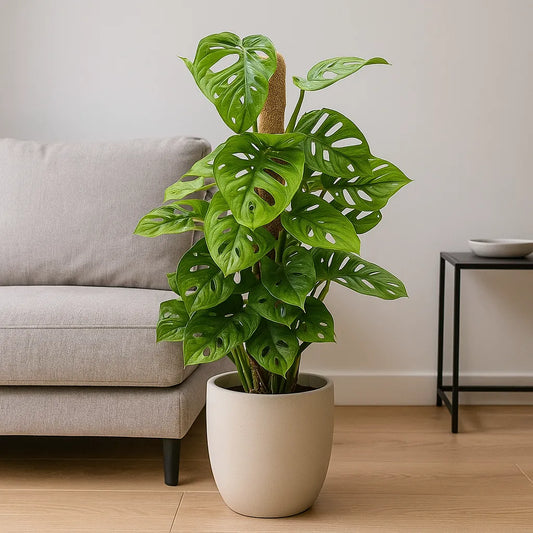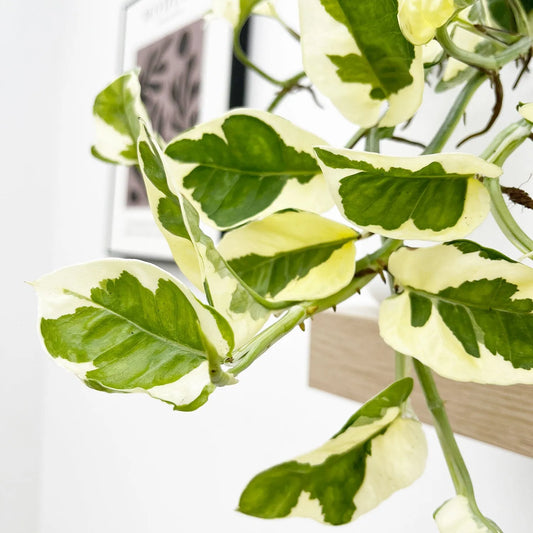Calathea Propagation: A Complete Guide
The Calathea is a beautiful plant to have in any space, and even though it can be a fussy tropical houseplant, once you get to grips with how to properly look after one it’s only natural that you will want more of them. Propagating new plants from your existing plants is a cheap and effective way to increase the size of your Calathea collection or to give as gifts.
Why should I propagate my calathea plant?
Propagating your Calathea plant is a great solution to multiple issues and is a fantastic way to grow new plants from existing ones. Calathea plants can quickly outgrow their pots and become rootbound. One way to reduce this and give your plants more space is to divide the plant and reduce the amount of root material in the pot. This gives you more plants that are healthier - giving you a space full of great looking plants.
What is the best way to propagate Calathea plants?
Propagating Calathea plants is a lot simpler than some other house plant species like the Monstera and Ficus. Both of these plants can be propagated in numerous and complex ways, but the best way to propagate Calathea plants is by division.
What is division propagation?
Division is one of the simplest methods of propagating a houseplant and it is as simple as it sounds. When it comes to repotting your plant you gently divide the plants different stems and repot them into different pots. Calathea plants do have fragile roots, but if you are careful you will get fantastic results.
How do I propagate a Calathea plant?
The process of propagating a Calathea by division is simple, but it needs to be done carefully to avoid damaging the root system.
When should I propagate my Calathea plant?
The best time to propagate your calathea is in early spring, just before the plant begins its new growth cycle. Because your plant is entering a state of faster growth it allows your newly divided plants to establish themselves in their new pots and recover quicker.
What do I need when I propagate my Calathea?
Before you start propagating your Calathea, you will need to have all your equipment ready to go. This will help you speed up the time the propagation takes and lower the amount of stress you put your plant through.
New pots - make sure you have enough new pots for the amount of divisions you are making. These pots should have a good amount of drainage holes and have enough room to allow the root system to grow.
Potting soil - have your new soil ready to go. Any potting should do, but make sure to avoid any acidic soil as it will damage the roots of your plant.
Sharp Knife - ideally you should never cut the roots of your Calathea when dividing your plant, but sometimes it is unavoidable. Have a sharp knife on hand to make quick, clean cuts to the roots if needed. This will reduce the damage to the roots and lessen the stress your plant goes through.
Trowel - having a trowel on hand will make it a lot easier to fill your pots
Watering can - for the best results you will need to water your divided houseplants as soon as possible once they are replanted. Have a watering can of room temperature ready to go so your plant can immediately start settling into it’s new pot
Steps to Divide Your Calathea Plants
Step one: Water your plants well the day before you intend to divide your plants to loosen the soil and reduce stress on your plant.
Step two: Fill the new pots one third of the way with your potting mix. Leave a slight mound in the middle of the pot.
Step three: Gently remove your Calathea from its pot and brush away any loose soil.
Step four: Look for the natural divisions in the roots. These will usually be around where stem clusters join together.
Step five: Using your fingers, gently separate the roots. You shouldn't need to cut or break any of the roots unless your plant is badly rootbound. If you need to use your knife to cut the roots.
Step six: Trim off any damaged or diseased roots.
Step seven: Place your new plant into a pot, letting the roots dangle down the sides of the mound you created in the soil. Whilst holding the stem straight, fill the pot until full.
Step eight: Water the plant well until the water begins to seep out of the drainage holes.
Step nine: You may want to cover your new Calathea with a plastic bag until you start to see new growth










